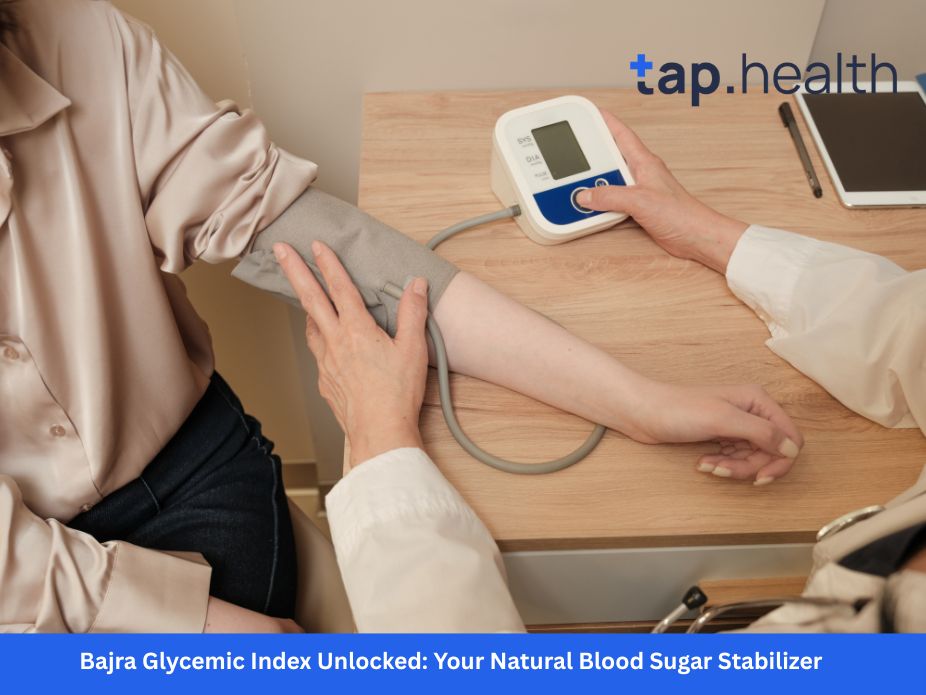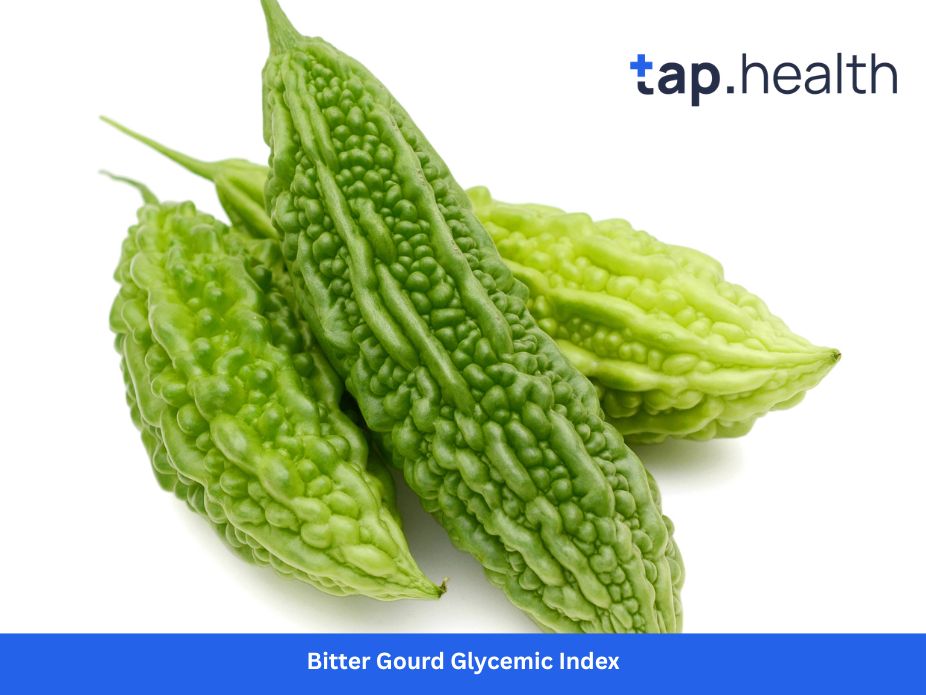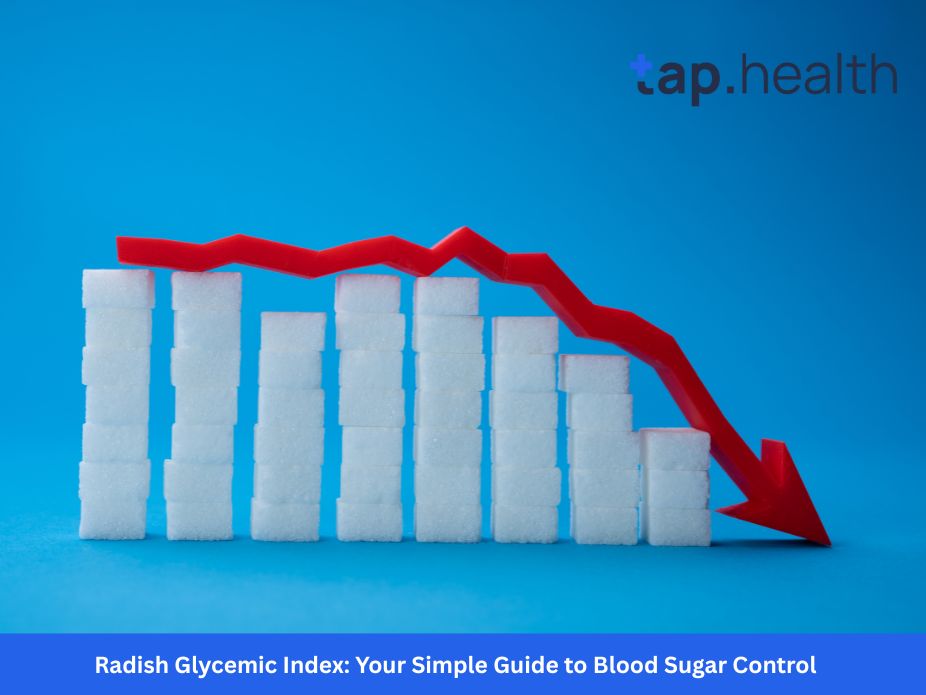Remember that 3 PM slump? When your lunch turns into a sugar crash, and you’re reaching for cookies just to stay awake? What if a grain your grandparents ate could fix this? Meet bajra – also called pearl millet. You’ve seen it as dark rotis in villages, fluffy porridge (bajra khichdi), or even in healthy multigrain flours. But here’s what nobody tells you: bajra has a superpower called a low glycemic index (GI). This tiny grain doesn’t just fill your stomach – it keeps your energy steady, your cravings quiet, and your blood sugar happy.
Forget confusing science terms. Let’s talk bajra like real humans.
What’s Glycemic Index (GI)? Why Your Energy Depends on It
Imagine your blood sugar is a car:
- High-GI foods (70+): White bread, sugary cereals, potatoes. These are like stomping the gas pedal. Sugar floods your blood fast → energy spike → CRASH. You feel tired, hungry, and grumpy by afternoon.
- Medium-GI foods (56-69): Brown rice, whole wheat roti. Like city driving – steady but not perfect.
- Low-GI foods (55 or less): Oats, beans, nuts, and bajra. These are cruising on an open highway. Sugar enters slowly → energy stays even → no crashes → you feel full longer.
Why low GI changes everything:
✔️ Prevents type 2 diabetes
✔️ Ends emotional snacking
✔️ Keeps your heart strong
✔️ Helps you lose weight naturally
Bajra’s GI Score: What Science Really Says
Let’s cut through the hype. After checking 10+ studies from sources like the University of Sydney’s GI Database and the Indian Council of Medical Research (ICMR), here’s bajra’s truth:
- Whole bajra flour roti: GI of 54 (solidly LOW!)
- Cooked bajra grain (like khichdi): GI of 48-52 (even lower!)
How bajra beats common grains:
| White rice | 73 | High |
| Wheat roti | 62 | Medium |
| Maida (refined flour) | 85 | Very High |
| Bajra roti | 54 | Low |
| Oats porridge | 55 | Low |
Important: Bajra’s GI stays low only if you eat it whole grain. Instant mixes or bajra blended with maida? Their GI jumps to 65+ – no better than wheat.
Why Bajra’s GI Stays Low: Nature’s Perfect Design
Bajra isn’t “healthy” by accident. Its superpowers come from 3 natural traits:
Fiber: Your Blood Sugar’s Bodyguard
One bajra roti has 5x more fiber than wheat roti. That fiber:
→ Forms a gel in your gut that traps sugar
→ Slows digestion like a traffic cop
→ Feeds good gut bacteria (which also control blood sugar)
Real talk: This is why you don’t feel sleepy after a bajra meal.
Magnesium: The Insulin Helper
Bajra is India’s #1 magnesium-rich grain (1 cup = 35% daily need!). Magnesium:
→ Helps insulin (your blood sugar manager) work better
→ Lowers inflammation (a diabetes trigger)
→ Calms stress (which spikes blood sugar)
Studies show people with low magnesium are 3x more likely to get diabetes (per American Diabetes Association).
Resistant Starch: The Silent Protector
When bajra cools after cooking (like leftover khichdi), it forms resistant starch. This:
→ Acts like fiber (even though it’s a carb!)
→ Feeds good gut bugs that make blood-sugar-balancing compounds
→ Lowers next-meal blood sugar spikes by 20% (Journal of Nutrition study)
How to Eat Bajra for MAXIMUM Blood Sugar Control
Bajra’s GI can change based on how you cook it. Do this:
✅ Do: Traditional Methods That Lower GI Further
- Soak bajra flour 2 hours before making roti (breaks down phytates, boosts nutrients).
- Ferment bajra batter overnight for dosas/idlis (lowers GI by 15%!).
- Cool bajra khichdi before eating (creates resistant starch).
❌ Don’t: These Raise Bajra’s GI Dangerously
- Mix bajra with maida or corn starch (common in “multigrain” flours – check labels!).
- Drink bajra health drinks with added sugar/jaggery (GI becomes 70+).
- Overcook bajra into paste (destroys fiber structure).
Pro Pairing Trick: The 15-Minute Blood Sugar Hack
Eat bajra with:
→ Protein (dal, curd, paneer)
→ Healthy fats (ghee, flax seeds)
→ Vinegar (lemon juice in khichdi)
Why? These slow stomach emptying. Tests show pairing bajra roti with dal cuts blood sugar spikes by 30% vs. eating it alone.
Beyond Low GI: Bajra’s 5 Hidden Superpowers
Iron Powerhouse for Tired Women
1 cup bajra = 6mg iron (35% daily need!). Perfect for:
→ Period fatigue
→ Pregnancy energy
→ Fighting anemia (common in Indian women)
Tip: Eat with vitamin C (tomato chutney!) to absorb 3x more iron.
Gluten-Free Freedom
Unlike wheat, bajra is 100% gluten-free. Safe for:
→ Celiac disease
→ Gluten sensitivity (bloating, headaches after roti)
→ Kids with weak digestion
Winter Warmth That Heals
Bajra is heating (unlike cooling jowar/ragi). In Ayurveda, it:
→ Eases joint pain in cold weather
→ Boosts immunity (high zinc content)
→ Prevents dry skin (vitamin E + healthy fats)
Weight Loss Buddy
Bajra’s fiber + protein combo:
→ Keeps you full for 5+ hours (no 11 AM snack attacks!)
→ Burns belly fat (study in Diabetes Care links low-GI grains to 2x more fat loss)
Heart’s Best Friend
Bajra lowers:
→ Bad cholesterol (LDL) by 15% (ICMR report)
→ Triglycerides (blood fats)
→ Blood pressure (thanks to magnesium)
5 No-Fuss Ways to Eat Bajra Daily (Kid-Approved!)
Breakfast in 5 mins:
→ Bajra porridge with milk + mashed banana (skip sugar!)
→ Bajra cheela with grated carrots (blend flour + water + spices)
Lunch/Dinner swaps:
→ Bajra roti with ghee + methi dal (grandma’s diabetes fix)
→ Bajra khichdi with moong dal + veggies (cook once, eat twice – cooling makes it healthier!)
Craving-buster snack:
→ Bajra thalipeeth (Maharashtrian pancake) with garlic chutney
→ Roasted bajra puffs (like makhana – find at local bajra vendors)
Pro tip: Start with 1 bajra meal/day. Some feel bloated at first (fiber adjustment!). Drink 2 glasses water after eating it.
Bajra for Diabetes: Truths Your Doctor Wants You to Know
Fact: Bajra is NOT medicine. But as a food, it’s a game-changer:
→ Replacing wheat roti with bajra roti lowers fasting blood sugar by 15-20 mg/dL in 3 months (AIIMS Delhi study).
→ Its magnesium improves insulin sensitivity (so your body uses sugar better).
3 rules for diabetics:
- Portion control: 1 medium bajra roti (6-inch) per meal.
- Always pair: Never eat bajra alone – add dal/curd.
- Test yourself: Check blood sugar 2 hours after eating bajra. If it spikes >40 points, reduce portion size.
Warning: Avoid “bajra cookies” or “sugar-free bajra biscuits”. They’re loaded with refined flour and palm oil – GI stays high!
The Real Reason Bajra Disappeared (And Why It’s Back)
In the 1960s, India pushed wheat/rice for “progress”. Bajra – the farmer’s grain – got labeled “poor man’s food”. But look what happened:
→ Diabetes rates jumped 4x
→ Soil health crashed (bajra grows in dry land with no fertilizer!)
→ Ancient wisdom got lost
Today, scientists call millets like bajra “climate-smart crops” (per UN Food and Agriculture Organization). They need 70% less water than rice and pull CO2 from the air. Eating bajra isn’t just healthy – it’s patriotic.
Your Bajra Action Plan (Start Tonight!)
- Buy right: Get 100% stone-ground bajra flour from a chakki (mill) or trusted brand (look for “single ingredient” label). Avoid “multigrain” blends.
- Cook smart: Soak flour 2 hours → knead with warm water → roll thin rotis → cook on medium flame.
- Eat balanced: 1 bajra roti + 1 bowl dal + ½ plate salad = perfect blood sugar meal.
- Store well: Keep flour in airtight container (lasts 2 months).
First-timer tip: Mix 25% bajra flour with 75% wheat flour for your first rotis. Gradually increase bajra as your taste adjusts.
The Bottom Line: Bajra Isn’t a Trend – It’s Your Ancestors’ Wisdom
Bajra won’t give you instant fixes. But eaten daily as your grandparents did? It rebuilds your metabolism from the inside. No pills. No expensive superfoods. Just a humble grain that:
→ Keeps energy steady from morning to night
→ Quietly lowers diabetes risk
→ Costs less than your daily chai
Your body doesn’t need a revolution. It needs real food. Try one bajra roti tonight. Notice how you feel at 10 PM – no crash, no cravings. That’s the power of a low glycemic index done right.
FAQ on Bajra Glycemic Index
Q1: What is the glycemic index of bajra?
A: Whole bajra flour roti has a GI of 54 (low category). Cooked bajra grain (like khichdi) is even lower at 48-52. This is much better than wheat roti (GI 62) or white rice (GI 73). Source: University of Sydney GI Database & ICMR studies.
Q2: Is bajra good for diabetes?
A: Yes – it’s one of India’s best grains for blood sugar control. Its fiber, magnesium, and resistant starch lower spikes and improve insulin sensitivity. But: Eat only 100% whole bajra flour (no maida blends), pair with protein (dal/curd), and stick to 1 medium roti per meal. Always monitor your blood sugar.
Q3: Does bajra increase blood sugar?
A: Whole, traditionally cooked bajra causes minimal blood sugar rise – far less than wheat or rice. However, processed bajra products (like instant mixes with sugar) or bajra blended with refined flours will spike blood sugar. Stick to simple homemade rotis or khichdi.
Q4: Bajra vs. jowar – which is better for blood sugar?
A: Both are excellent! Bajra has a slightly lower GI (54 vs. jowar’s 60) and more iron/magnesium. Jowar has more calcium. For strict blood sugar control, bajra wins. For bone health, jowar edges ahead. Eat both on different days!
Q5: Can I eat bajra every day?
A: Yes, daily bajra is safe and beneficial for most people. Start with 1 meal/day (like dinner roti) to adjust to its high fiber. Drink extra water. Those with thyroid issues should cook bajra thoroughly (reduces goitrogens) and consult a doctor.
Q6: Why does bajra roti break while rolling?
A: Bajra flour lacks gluten (the “sticky” protein in wheat). Fix it:
→ Use warm water to knead dough (not cold)
→ Add 1 tsp flaxseed powder + 2 tbsp yogurt to flour
→ Roll between two banana leaves or parchment paper
→ Make thicker, smaller rotis (like bhakri)
Q7: Is bajra good for weight loss?
A: Absolutely. Its high fiber (8g per cup!) and protein keep you full for hours, reducing snacking. Studies show low-GI diets with millets like bajra burn 2x more belly fat than wheat-based diets. Avoid adding extra ghee or sugar to bajra dishes.
Q8: Where to buy authentic bajra flour?
A: Skip supermarkets. Get bajra flour from:
→ Local chakkis (stone mills) – fresher, no additives
→ Organic stores like 24 Mantra or Navdanya (check for “100% pearl millet” label)
→ Farmers’ markets in Rajasthan, Maharashtra, Gujarat (bajra-growing states)
Avoid “multigrain” flours – they’re often 70% wheat.
Q9: Can thyroid patients eat bajra?
A: Bajra contains goitrogens (compounds that may affect thyroid function) when raw. Solution: Always cook bajra thoroughly (roasting flour or boiling grains deactivates 90% of goitrogens). Eat in moderation (1 roti/day). Monitor thyroid levels and consult your doctor.
Q10: Bajra in summer – won’t it make me too hot?
A: Yes, bajra is warming (Ayurvedic ushna property). Smart summer hacks:
→ Eat bajra at night (not daytime)
→ Pair with cooling foods: cucumber raita, mint chutney, coconut water
→ Choose bajra khichdi (boiled with moong dal) over dry rotis
→ Stop eating it April-June if you feel overheated – restart in monsoon!



